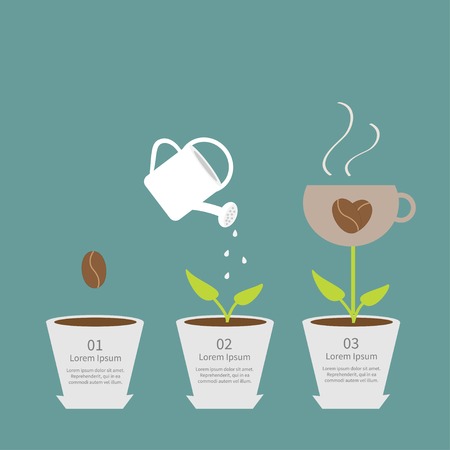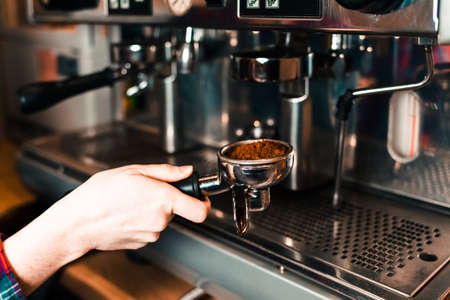Introduction: The Shift Towards Sustainable Coffee Packaging in the UK
The UK’s love affair with coffee is woven into its daily rhythms, from bustling high street cafés to cosy kitchen corners where the kettle is always on. Over recent years, this vibrant coffee culture has evolved beyond the pursuit of the perfect flat white; it now mirrors a collective consciousness towards sustainability and environmental stewardship. As British consumers become increasingly attuned to the environmental impact of their choices, packaging has emerged as a focal point for change—particularly in the world of coffee. No longer is it just about taste or convenience; shoppers are actively seeking out brands that align with their eco-friendly values, pushing for solutions that lessen landfill waste and reduce carbon footprints. Against this backdrop, compostable, recyclable, and reusable packaging options have come to the fore, each offering unique benefits and challenges within the UK market. This article sets out to compare these three approaches, providing clarity for both coffee aficionados and industry insiders eager to navigate the shifting landscape of sustainable packaging.
2. Compostable Coffee Packaging: Promise and Pitfalls
When it comes to packaging coffee in the UK, compostable materials have become something of a buzzword among eco-conscious roasters and discerning coffee drinkers. But what does “compostable” actually mean here on British soil? In the UK, compostable packaging must meet specific standards such as EN13432, meaning it breaks down into non-toxic components within 12 weeks in industrial composting facilities. This sounds promising, especially for those wanting to leave a lighter footprint after their morning flat white.
The Benefits of Compostable Packaging
Compostable coffee packaging offers several advantages for UK businesses and consumers alike. It reduces landfill waste, limits reliance on fossil fuel-derived plastics, and aligns with the growing consumer demand for sustainable options. Many local cafes and roasteries in places like Bristol or Edinburgh highlight compostable bags as a mark of ethical sourcing and contemporary taste.
| Benefit | Details |
|---|---|
| Reduces Landfill Waste | Breaks down quickly in industrial composting environments, unlike traditional plastics |
| Lower Carbon Footprint | Made from plant-based materials with renewable sources |
| Consumer Appeal | Meets rising demand for visible sustainability commitments in the UK market |
Limitations: Not All That Glitters Is Green
Despite its promise, compostable packaging comes with notable limitations. One of the biggest challenges is confusion around home vs. industrial compostability. Most “compostable” coffee bags require processing in commercial facilities—of which there are only a handful across the UK. If mistakenly tossed in regular household compost bins or recycling streams, these materials can contaminate waste or simply fail to break down as intended.
The Real-World Challenge for Consumers & Businesses
From London’s artisan roasteries to independent shops up north, both businesses and customers face a learning curve. Proper disposal relies on clear labelling, local infrastructure, and increased public awareness—none of which are guaranteed. While some brands offer take-back schemes or partner with specialist waste processors, these initiatives aren’t yet widespread.
| Challenge | Description | UK Context |
|---|---|---|
| Lack of Infrastructure | Few industrial composting facilities accept packaging materials nationwide | Pockets of access in major cities; rural areas often miss out |
| Misleading Labelling | Difficult for consumers to distinguish between home-compostable and industrially compostable products | No standardised symbols yet enforced by UK regulators |
| Contamination Risk | If placed in recycling or general waste, can compromise entire batches of recyclables or landfill content | Common issue reported by local authorities and waste handlers across England and Scotland |
The Bottom Line for UK Coffee Lovers and Sellers
Compostable coffee packaging certainly holds promise for reducing environmental impact within the UK market. However, its true effectiveness hinges on robust disposal systems and better education at every stage—from barista to bin. For now, it remains a step in the right direction but not yet a catch-all solution to the country’s coffee packaging conundrum.

3. Recyclable Packaging: Convenience Versus Reality
The concept of recyclable packaging has swept through the UK’s coffee industry, with brands quick to highlight their eco-friendly credentials on every bag and box. From crisp bags for whole beans to clever plastic-lined cartons for ground coffee, “recyclable” seems like a magic word. But how much of this packaging actually avoids landfill? In reality, the answer is more complicated than most consumers realise.
The Allure of Recyclability
For British shoppers, tossing packaging into the recycling bin feels almost as satisfying as that first sip of morning brew. Major retailers and independent coffee roasters alike have responded to this demand by rolling out packaging labelled as “widely recyclable.” This usually includes materials such as paper, cardboard, and certain plastics—often adorned with the familiar Mobius loop symbol. The intention is good: reduce waste and keep valuable materials in circulation.
Infrastructure Gaps and Wishful Thinking
However, there’s a gap between what packaging claims and what UK recycling infrastructure can handle. Many coffee bags are made from composite materials—layers of foil, plastic, or paper fused together for freshness—which local recycling plants can’t easily separate. Even when items are technically recyclable, not all councils accept them due to cost or equipment limitations. This patchwork system leaves well-meaning consumers confused and often unwittingly contaminating recycling streams.
What Actually Gets Recycled?
According to recent studies, only a fraction of recyclable coffee packaging is truly recycled in practice. Single-material cardboard sleeves fare best, but flexible plastics and laminates still face significant barriers. While initiatives such as supermarket drop-off points for soft plastics are growing, uptake remains limited outside urban centres. For many British households, convenience still outweighs careful sorting or trips to specialty facilities.
The Road Ahead for UK Coffee Packaging
Brands operating in the UK market must balance consumer expectations with practical realities. Clearer labelling, harmonised council policies, and investment in advanced recycling technologies are all needed to bridge the gap between aspiration and action. Until then, recyclable packaging offers promise—but it’s no silver bullet for sustainability in Britain’s bustling coffee scene.
4. Reusable Packaging: A Return to Traditional Values
Reusable coffee packaging taps into a distinctly British sensibility—where thrift and longevity are not just practical concerns, but part of the national character. The UK has a long-standing tradition of making things last, from the cherished family teapot passed down through generations to the classic habit of “make do and mend.” In today’s coffee market, this ethos finds new expression in the rise of reusable coffee containers and the cultural embrace of bringing your own cup.
The shift towards reusables is more than a nod to sustainability; it’s about reviving values that have shaped daily life across the country. Local cafés, especially in London, Edinburgh, and Bristol, increasingly encourage customers to bring their own containers, often rewarding them with discounts or loyalty points. This not only reduces single-use waste but also fosters a sense of community and personal responsibility—hallmarks of British social life.
Adoption Logistics: Practicalities and Challenges
The practical side of adopting reusable packaging in UK markets revolves around convenience and hygiene. Coffee shops must accommodate various container sizes and ensure safe refilling practices, while consumers juggle remembering their cups with the reality of busy commutes. For roasters and retailers, offering bulk bins or refill stations involves investment in infrastructure and staff training. Below is a comparison of considerations for different stakeholders:
| Café/Shop | Consumer | Supplier/Roaster | |
|---|---|---|---|
| Convenience | Requires flexible serving setups | Must remember to carry container | Bulk packaging logistics |
| Hygiene | Strict cleaning protocols needed | Responsible for container cleanliness | Safe storage & dispensing systems |
| Cost | Initial investment in equipment | Saves money over time (discounts) | Potentially lower packaging costs |
| Cultural Fit | Strengthens local identity & loyalty | Echoes British thriftiness & pride | Aligns with sustainable brand values |
The ‘Bring Your Own Cup’ Movement: A Cultural Embrace
The ‘bring your own cup’ movement is gaining momentum across the UK, from bustling city centres to quaint village high streets. It signals not just environmental awareness but a cultural return to valuing what we already have. Campaigns by organisations like KeepCup UK and Surfers Against Sewage highlight how Britons are eager to combine practicality with purpose. In true British fashion, these shifts are often accompanied by friendly banter at the till—a small but significant reminder that sustainability can be both stylish and sociable.
5. Environmental Impact: A Comparative Analysis
When it comes to coffee packaging in the UK, each material—compostable, recyclable, and reusable—carries distinct environmental implications that resonate with both eco-conscious consumers and local sustainability goals.
Compostable Packaging
Compostable packaging is often lauded for its ability to break down into non-toxic components under the right conditions, typically within industrial composting facilities. In terms of carbon footprint, its production can sometimes require less energy than traditional plastics; however, sourcing bio-based materials (such as corn starch) may lead to agricultural impacts and transport emissions. While compostables reduce landfill waste if properly disposed of, their effectiveness in the UK depends heavily on access to suitable composting infrastructure—a notable challenge in many British regions.
Recyclable Packaging
Recyclable options, especially those made from aluminium or certain plastics, offer significant potential for waste reduction when integrated into the UK’s robust recycling systems. Their lifecycle analysis shows benefits in resource conservation, as materials can be reprocessed multiple times. Nevertheless, contamination and improper sorting remain problematic, sometimes resulting in recyclable packs ending up in general waste streams. The carbon footprint of recycling processes is generally lower than producing new materials from scratch but higher compared to some compostable alternatives.
Reusable Packaging
Reusable packaging—think refillable tins or jars—stands out as the most sustainable choice over the long haul. Its environmental impact is front-loaded; manufacturing a sturdy container incurs a higher initial carbon cost, but repeated use quickly offsets this through dramatic reductions in single-use waste. In the context of British markets, where local roasters are increasingly offering refill stations and deposit-return schemes, reusables promise genuine waste minimisation and a positive shift in consumer habits.
A Balanced Perspective for UK Coffee Culture
Lifecycle analyses across these packaging types reveal there is no one-size-fits-all solution. Compostables excel where composting infrastructure exists; recyclables thrive when consumers and councils work hand-in-hand to ensure proper disposal; reusables demand behavioural change but offer unrivalled sustainability dividends over time. For UK coffee lovers keen to shrink their environmental footprint, the key lies in understanding these nuances—and championing systems that match local realities.
6. Consumer Perceptions and Industry Response
The British coffee scene has always been a blend of tradition and innovation, but when it comes to packaging, UK consumers are increasingly discerning. Environmental consciousness is not just a trend here—its fast becoming an expectation. Recent surveys show that a significant proportion of Britons prefer brands that make visible efforts towards sustainability, especially in packaging choices. Compostable, recyclable, and reusable options are scrutinised by shoppers looking for both convenience and eco-credibility.
Consumer Attitudes: Green Credentials on Display
Across the UK, from bustling London high streets to small-town independents, customers are quick to spot greenwashing and demand transparency. Compostable packaging is often favoured for its perceived environmental benefit; however, many UK consumers now understand the importance of correct disposal routes (like industrial composting facilities) and expect clear labelling. Recyclable packaging remains popular, but only when it fits with local council recycling schemes—nothing frustrates Brits more than ‘recyclable’ packs that end up in general waste due to technicalities. Meanwhile, reusable solutions like refillable tins or bring-your-own-container schemes are gaining traction among eco-savvy urbanites willing to change their habits.
Brand Adaptation: From High Street Chains to Indie Roasters
Coffee brands and retailers are responding with a mix of pragmatism and creativity. Major chains such as Pret A Manger and Costa Coffee have piloted compostable cups and incentivised reusable cup use with discounts—small gestures that resonate strongly with environmentally minded customers. Boutique roasters are going further, introducing fully home-compostable bags or collaborating with zero-waste shops on bulk bin initiatives. The common thread is clear communication: British consumers value honest storytelling about packaging impact, challenges, and future goals.
Shifting Expectations: Sustainability as Standard
As government policies tighten around single-use plastics and public awareness grows, what was once considered innovative is rapidly becoming the norm. UK shoppers now expect their morning brew to come guilt-free—not just in terms of ethically sourced beans, but also the packaging journey from shelf to bin. Brands slow to adapt risk losing ground in a market where sustainability is not just a preference but an expectation woven into daily life.
7. Conclusion: Navigating the Future of Coffee Packaging
As we reflect on the journey through compostable, recyclable, and reusable packaging options in the UK coffee market, it’s clear that there is no silver bullet—each solution has its own merits and challenges. Compostable packaging offers a promising end-of-life scenario, especially where industrial composting facilities are accessible. Recyclable materials align with established British recycling systems, though they depend heavily on consumer diligence and local council capabilities. Meanwhile, reusable packaging channels the growing appetite for circular solutions, inspiring both independent coffee shops and larger chains to experiment with take-back schemes and refill stations.
What emerges from this comparison is a distinctly British pragmatism: a willingness to adopt new materials and habits, but always with an eye to practicality and genuine impact. The next chapter for coffee packaging in the UK will likely blend innovation with tradition—embracing cutting-edge biomaterials while respecting the familiar rituals of a good cup of coffee. We can anticipate more collaboration between roasters, retailers, councils, and consumers to close the loop, reduce waste, and set new standards for sustainability. As the landscape evolves, UK coffee lovers are well-positioned to lead by example, championing packaging choices that not only preserve flavour but also protect our environment for future generations.


